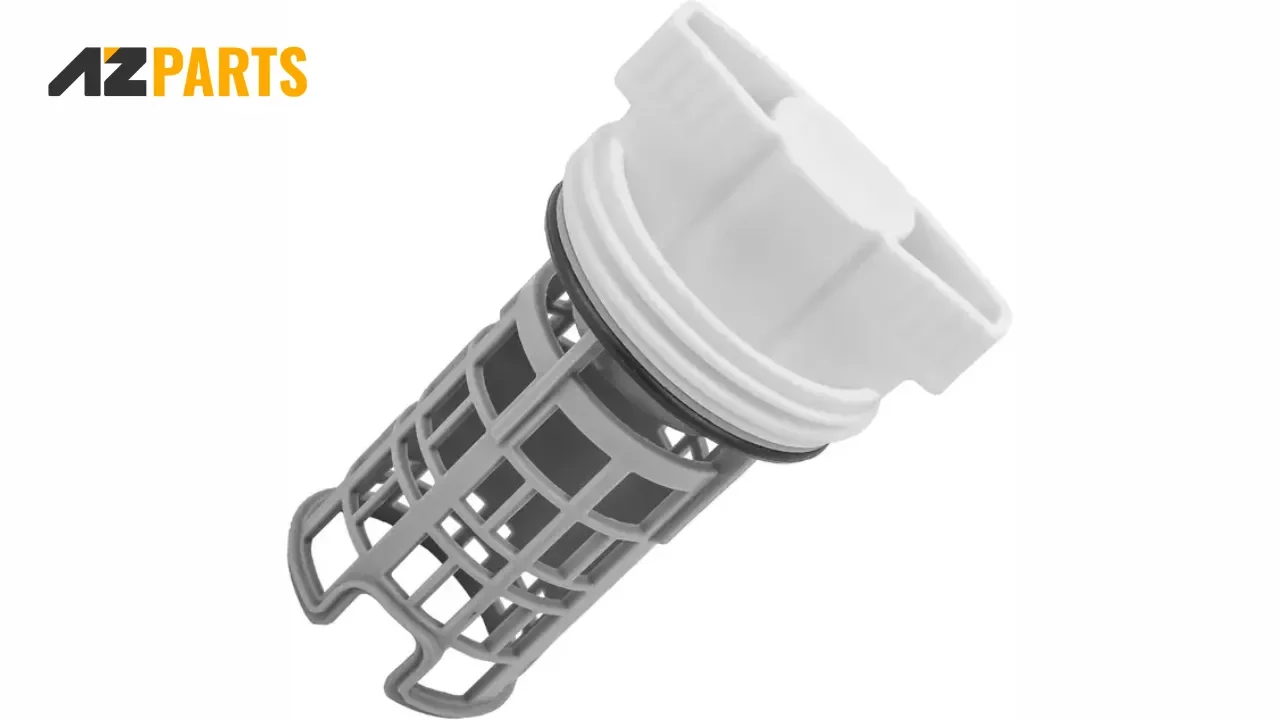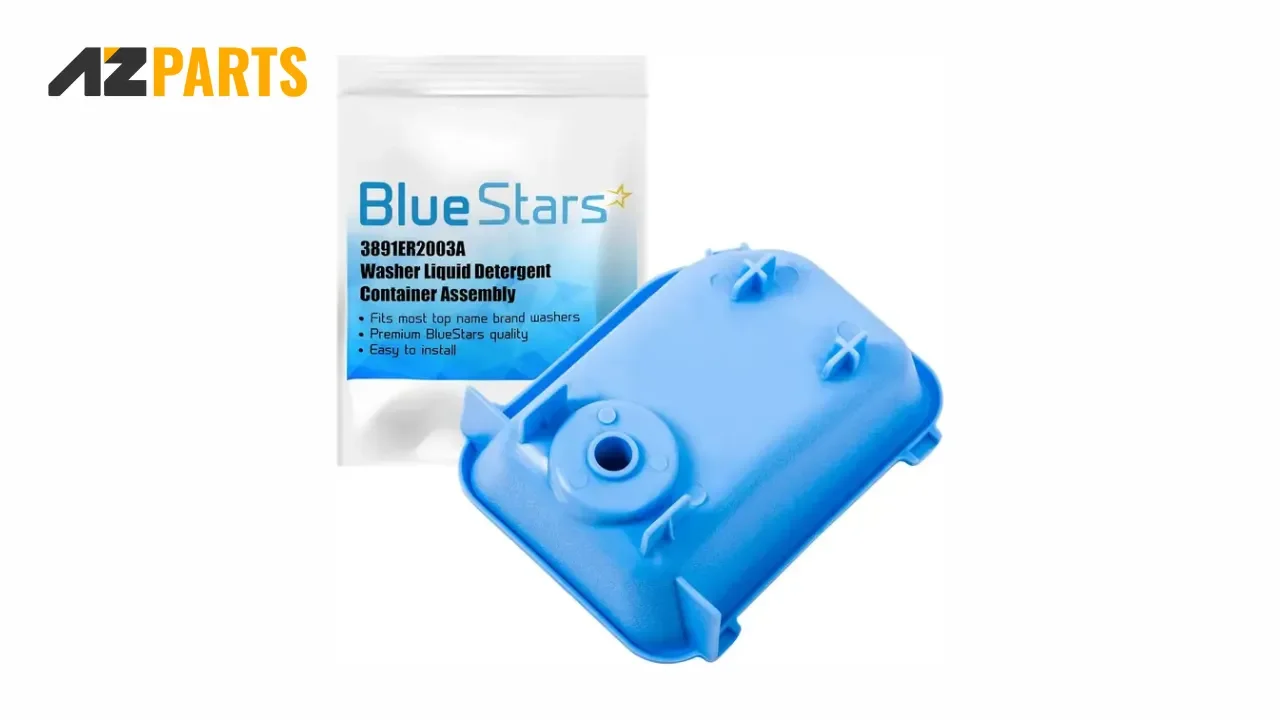Repair help
Why Do My Clothes Have Dark Spots After Washing?
AZparts Team
Updated on July 17, 2025
6 min read
Finding dark spots on your clothes right after washing can be confusing and frustrating, especially when you expect them to come out clean and fresh. These marks not only affect the appearance of your garments but also raise concerns about your detergent, washing machine, or laundry habits. In reality, several different factors can lead to this issue. In this article, AZParts will help you identify the causes and provide effective solutions to keep your clothes spotless and looking like new.

1. 7 Common reasons for a washing machine leaving black spots on clothes
If you’ve noticed mysterious black spots on your clothes after washing, your machine might be the reason. Here are 7 common causes for black marks on laundry and how you can fix them:
1.1. Overloading your washer
Putting too many clothes into the washing machine at once can prevent water and detergent from circulating properly, reducing the cleaning efficiency. When garments don’t have enough space to tumble freely, dirt, grease, and detergent residue may get trapped on the fabric surface, eventually causing dark stains after the wash cycle. Additionally, constant overloading can unbalance the drum, lower performance, and damage internal components over time.

Overloading your washer may cause black spots on clothes (Source: AZParts)
1.2. Not cleaning washing machine
Over time, washing machines accumulate lint, hair, grease, detergent buildup, and even bacteria inside parts like the drum, drain hoses, and especially the drain pump filter. If not cleaned regularly, this debris can be recirculated during a wash cycle and stick to clothing, leaving behind black spots, smudges, or even unpleasant odors.
To solve this issue, it is important to inspect and clean the drain pump filter on a regular basis. If the filter is cracked, clogged, or no longer functioning properly, consider replacing it with a washer pump filter from AZParts. This high-quality component is compatible with many popular washer brands and models, ensuring a clean drainage system and reliable machine performance.

Pump filter ensuring a clean drainage system and reliable machine performance (Source: AZParts)
1.3. Natural flaws in the fabric
Some fabrics, especially those of lower quality or unknown origin, may contain impurities or unstable dyes. When exposed to water and the mechanical force of a washing cycle, these components can react and create black or gray spots on clothing. In these cases, the stains do not come from the washer itself but rather from the fabric’s inherent flaws. Choosing higher-quality materials and pre-washing new clothes can help reduce this issue.
1.4. Detergents with fillers
Certain detergents, particularly those with inexpensive filler ingredients, may not dissolve completely in water. When this happens, the undissolved particles can stick to clothes and leave dark marks or residues after washing. This issue is more likely when using too much detergent for the load size or water level.
In addition, a detergent drawer that is clogged or malfunctioning can prevent detergent from being dispensed evenly during the wash. This causes buildup and increases the risk of stains. If the detergent compartment is damaged or no longer effective, replacing it with a washer detergent box from AZParts is a practical solution. This part is designed to fit many popular washing machine models, allowing for proper detergent flow and better cleaning performance.

Detergent box allowing for proper detergent flow and better cleaning performance (Source: AZParts)
1.5. Mixing lights and darks clothes
Washing light and dark garments together is a common laundry mistake. When dark-colored clothing is washed with lighter items, dye can bleed and transfer, especially during hot washes or when strong detergents are used. This can cause black marks, discoloration, or dull patches on light fabrics. To prevent this, always separate light-colored clothes from dark ones before washing.
1.6. Previously filthy load
Washing regular clothes together with heavily soiled items like gardening clothes, sportswear, or construction outfits can cause dirt, grease, and residue to spread inside the drum and transfer back onto clean clothes. These substances are often hard to dissolve in water and may leave dark spots or stains on fabric. To prevent this, wash heavily soiled items separately and clean the machine after heavy-duty loads.

Washing regular clothes with heavily soiled items like workwear or sportswear can spread dirt (Source: AZParts)
1.7. Not protecting your favourite items
Delicate items like white shirts, silk, or stain-prone fabrics can be easily damaged in the wash. Without using a laundry bag or washing them separately, they may rub against coarse items, zippers, or metal buttons, causing fabric damage or stains. Residue from detergent or grease from other clothes can also leave tough black marks.
2. How can I clean clothes that already have black spots?
Black stains on clothes after washing are common but often treatable with the right methods. These stains may result from detergent residue, mold, or a dirty washing machine. Here are some simple ways to restore your clothes:
- Soak clothes in white vinegar and warm water: Mix white vinegar and warm water in a 1:2 ratio. Soak the clothes for 30–60 minutes, then wash as usual. The mild acid in vinegar helps dissolve detergent residue, grime, and bacteria.
- Use baking soda on the stains: Sprinkle baking soda directly onto the black spots, add a few drops of water to make a paste, then gently scrub with a soft brush. Let it sit for 10–15 minutes before rinsing.
- Apply hydrogen peroxide (3%): Dab 3% hydrogen peroxide onto the stain using cotton or a clean cloth. Let it sit for 10–15 minutes, then rinse with cold water. Test on a hidden area first to avoid fabric discoloration.
- Use mild enzyme-based detergent: Choose detergents with enzymes that break down organic stains but are gentle on fabric. Avoid harsh bleaches, especially for delicate materials like silk, wool, or thin cotton.
- Hand wash and wash separately: After treating the stains, hand wash the item separately to prevent spreading the stain to other clothes. Hand washing also allows better control over fabric handling.
- Clean the washing machine afterward: Check and clean the drain filter, drum, and detergent compartments to prevent black stains from reappearing in future washes.

Can use vinegar, warm water and baking soda to solve black spots on clothes (Source: AZParts)
If stains remain after these steps, they may be deeply set or the fabric may be damaged. In that case, consider repurposing the garment (e.g., as cleaning cloths) or dyeing it to cover the stains. Black stains on clothes after washing not only affect appearance but also cause concern about the quality of the washing machine and daily laundry habits.
However, if you understand the causes such as excess detergent, a dirty machine, damaged components or improper washing practices, solving the issue becomes easier. By regularly cleaning the machine, using a proper amount of detergent and softener, and paying attention to the condition of washer parts, you can effectively prevent unwanted stains and keep your clothes clean and long lasting after every wash.
Contact Information:
8 The Green, Ste A, Dover, Delaware 19901-3618, United States
Discover more washer issues you might not be aware of:
Washer
Further Reading
Further Reading





_1748341252.jpg&w=3840&q=75)